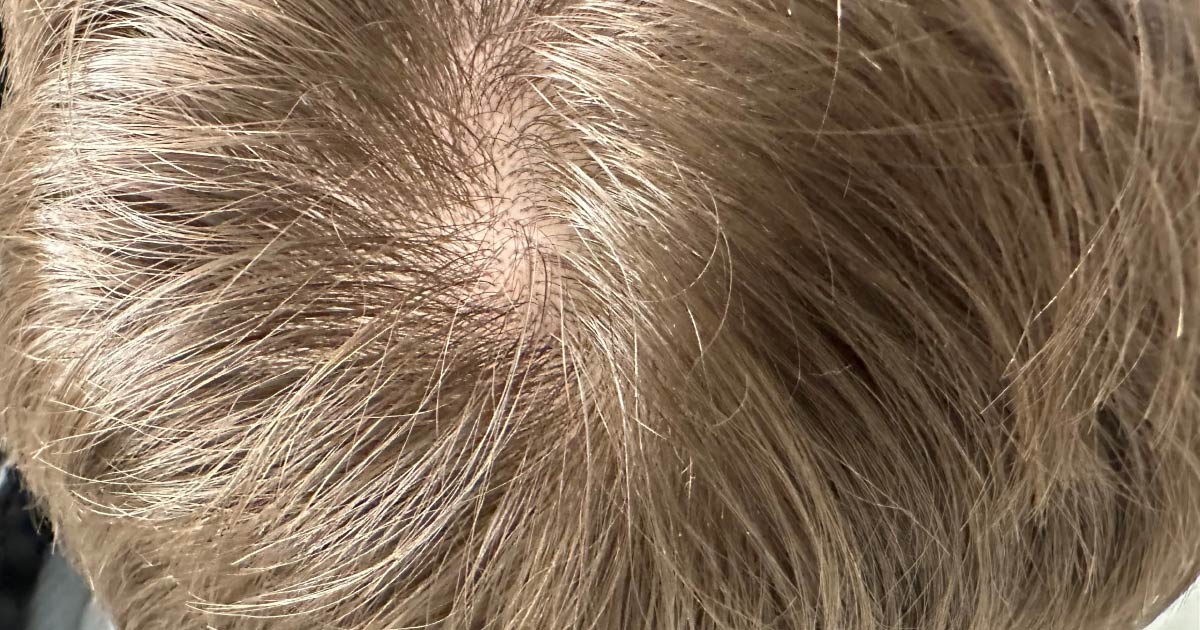What is Folliculitis?
Folliculitis is a purulent inflammation of the hair follicle (hair bulb). Folliculitis can occur on all parts of the body where hair grows. Commonly affected areas include the scalp, beard area, armpits, groin, and perianal zones. This condition can occur at any age, and both men and women are equally affected.

Causes of Folliculitis
The development of folliculitis can be caused by bacterial, parasitic, fungal, or viral infections. The most common pathogens belong to the genus Staphylococcus – especially Staphylococcus aureus and Staphylococcus epidermidis.
Mites of the genus Demodex, which live on the skin, can trigger parasitic folliculitis. A weakened immune system also promotes the development of Candida (fungal) or viral folliculitis.
Factors that contribute to the occurrence of the condition include:- Micro-injuries to the skin, for example from shaving or mechanical hair removal (plucking, waxing, or sugaring);
- Skin maceration in skin folds or under bandages or clothing – especially in hot and humid climates;
- Topical use of hormone-based ointments or cosmetic products that enlarge the pores;
- Presence of diabetes mellitus, eczema, or psoriasis;
- Use of medications that weaken the immune system, as well as other diseases or conditions with reduced immune defense.
Skin injuries and maceration provide ideal entry points for infections, while a warm and humid environment promotes the growth of pathogenic microorganisms.
If the triggering factors are not eliminated in time, folliculitis can become chronic and recur repeatedly.
Classification of Folliculitis
A distinction is made between superficial folliculitis, in which the purulent inflammation affects the upper third of the hair follicle up to the opening of the sebaceous gland, and deep folliculitis – a purulent inflammation that involves the entire hair follicle and surrounding tissue.
There is also a rare, severe, chronic-purulent inflammation of the hair follicles known as abscessing, destructive folliculitis according to Hoffmann. This form primarily affects the hair follicles of the scalp, and more rarely the groin, anal, or armpit region. Mostly young men between the ages of 18 and 40 are affected. The exact causes of this disease are not yet fully understood. However, examinations of the purulent secretion often reveal staphylococci, streptococci, or Pseudomonas aeruginosa.
Symptoms of Folliculitis
Folliculitis initially presents as an inflamed, bright red bump. After about three days, a pus-filled blister (pustule) with a yellowish-green content forms at this spot. In the center of the pustule there is usually a hair or the opening of the hair follicle. The pustule may rupture and leave behind an erosion, but more often it dries out after five to seven days and forms a yellowish crust. After the crust falls off, slight flaking may occur.
In most cases, folliculitis heals without scarring – exceptions are cases where the tissue undergoes purulent necrosis (here, a small pinpoint scar may remain).
In abscessing folliculitis according to Hoffmann, the hair follicles in the crown, back of the head, and neck are initially affected. Numerous painful nodules with purulent discharge form, which tend to merge, form abscesses, and develop fistulous tracts. Through these fistulas (pathological connections), the purulent abscess material drains outward. After the acute process subsides, coarse scars remain, which can lead to irreversible alopecia (hair loss) in these areas. The condition may be accompanied by fever and swelling of regional lymph nodes.
Special Aspects of Folliculitis Treatment
Before starting treatment, the doctor must determine the etiology – that is, the exact cause of the disease. If the folliculitis is caused by a fungal infection, antifungal medications are used. If it is of bacterial origin, antibiotic ointments are usually prescribed.
In general, the effective treatment of folliculitis always depends on its type and cause – in many cases, therapy can even be carried out at home. However, in more severe cases, systemic treatment with medication is necessary.
In bacterial folliculitis, antiseptic agents such as hydrogen peroxide or special ointments may be used. These help eliminate bacteria and reduce inflammation. To prevent folliculitis caused by mechanical irritation, it is advisable to wear loose clothing and avoid strong friction on the skin.
Folliculitis is a common condition that can affect the appearance and health of the skin. Although unpleasant, folliculitis can usually be well managed with proper treatment. The most important step is identifying the cause of folliculitis and selecting a therapy that fits the individual case. In many instances, self-treatment is possible, but a doctor should always be consulted when necessary to obtain the right therapy or prescription medications. By following recommendations, folliculitis can be successfully treated, allowing you to enjoy healthy, beautiful skin.
Prevention of Folliculitis
To prevent the occurrence of purulent skin conditions such as folliculitis, it is important to follow some simple rules:- Regular hand washing with soap.
- Daily hygienic showers at least once a day, more frequently in cases of excessive sweating.
- Use of protective products when working in harmful environments.
Preventing folliculitis also includes the timely treatment of skin diseases.


